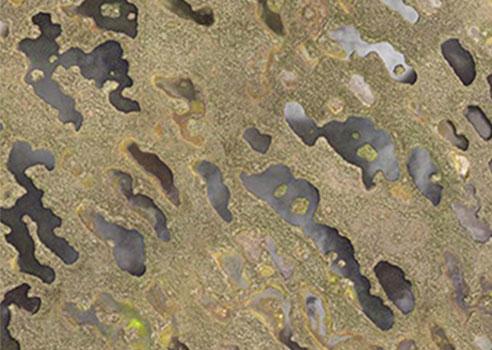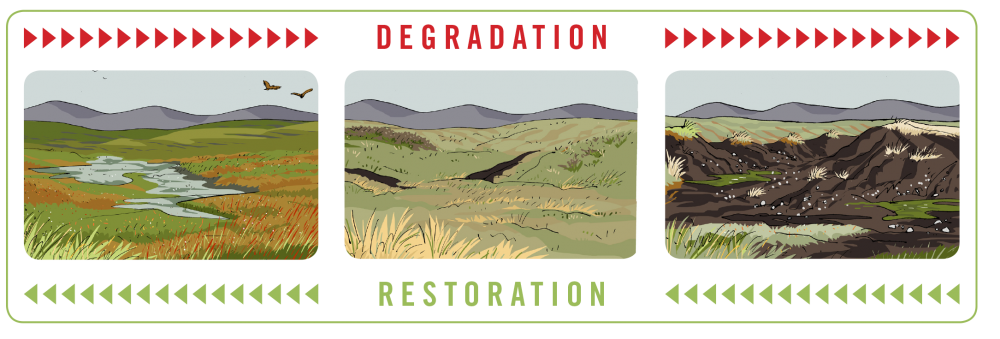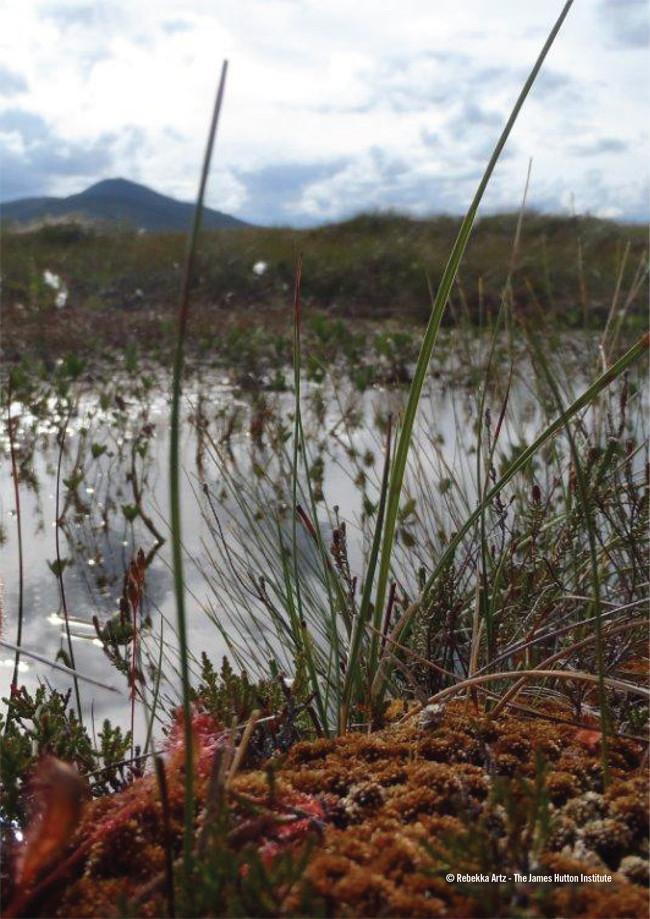Scotland has committed to peatland restoration as part of its array of policies to tackle climate change. Peatland restoration can make a significant difference for Scotland and the UK, as a substantial sink of greenhouse gas (GHG) emissions, and to enhance an internationally important habitat for biodiversity and water aspects, and a culturally significant place for the public. Our research takes into account and aligns these diverse viewpoints to make sure peatland restoration is done in the right place, at the right time, and with the best possible practice to ensure maximum environmental, economic and social benefits.

Stage
Directory of Expertise
Purpose
Peatlands are spectacular landscapes that account for nearly a quarter of Scotland’s land. Historically these landscapes have been deemed wastelands. Various efforts have been made to reclaim and make them more productive (for example, draining, burning afforesting).
Our understanding of the societal value of peatlands has vastly increased over the last few decades. Peatlands store a huge amount of carbon (25 times more than any other plant life), are internationally important habitats for wildlife and soil organisms, provide us with clean drinking water and are iconic and culturally significant Scottish landscapes.
Peatlands are sensitive to, and under threat from, the anticipated effects of climate change. Higher temperatures in the summer will lead to peat drying out further, while heavier rainfall will damage these landscapes. These landscapes are resilient but, if they are unable to regenerate, can release large amounts of carbon back into the atmosphere that will compound the effects of climate change.

Scotland has committed to peatland restoration as part of its array of policies to tackle climate change and to achieve the emissions reduction targets in the Climate Act (Scotland) 2009. As a consequence, large scale restoration programmes are ongoing, with over 20,000 hectares restored in Scotland in 2017 alone.
Our peatlands research is multifaceted and providing an evidence base for the wider costs and benefits of Scottish peatlands restoration. This includes improving methods for calculating carbon stores and establishing the extent to which peatland restoration will help Scotland and the UK meet their emission reduction targets.
This research is not limited to emissions and also looks at how peatland restoration enhances other environmental benefits, such as biodiversity and water regulation. We have also engaged with the wider public about what they think about peatlands and how it should be used and managed.
Results
Our ongoing research has dramatically improved estimates of peatland carbon stores. Peatland restoration activities have been carried out for over a decade. However it had previously not been possible to formally account for the benefits this restoration has provided. We have direct access to a flagship experimental site (a formerly afforested bog) located on the RSPB Scotland at the Forsinard Flows Reserve. The reserve is Europe’s largest blanket bog and accounts for 5% of the world’s total.
Working in partnership with others, we have monitored the GHG fluxes at several Forsinard sites and have shown how restored peatland can significantly help store more GHGs. We are also developing methods to more accurately evaluate the cost-effectiveness of peatland restoration and evaluate the condition of peatland.
Our research shows that Scottish people consider peatlands to be an important part of their national identity and that restoration will benefit them and future generations.
We have also been able to demonstrate the positive effects of specific peatland restoration interventions on soil fungi and invertebrates, such as insects and moths. Following restoration, the populations of these communities became like those of near natural peatlands. We have developed a decision support tool for peatland restoration across Scotland that summarise all the information that is available on peatland locations and their condition.
Ongoing work aims to develop a systems model of peatland restoration. We are also experimenting with virtual reality in the form of 360 degree video to help communicate our science.

Our research shows that people consider peatlands to be an important part of Scotland’s national identity and that restoration will benefit them and future generations. The main types of benefits mentioned were increased biodiversity, improved water regulation and carbon storage, and uses such as grazing and peat cutting, to less tangible benefits such as inspiration, and a sense of space and connectedness.
Our findings also highlight the economic value the public attach to these benefits (from £127 to £414) and the locations where they would most like to see restoration taking place (i.e. wild-land areas with high-peat concentration). This demonstrates the public’s understanding of the issues and their broadly positive views on peatland restoration.
Benefits
 Our research has demonstrated the wide-ranging benefits of peatland restoration on biodiversity and water aspects, its carbon storage potential, how peatland restoration is viewed by the public and how it can contribute to other societal uses including human values.
Our research has demonstrated the wide-ranging benefits of peatland restoration on biodiversity and water aspects, its carbon storage potential, how peatland restoration is viewed by the public and how it can contribute to other societal uses including human values.
By taking into account and aligning diverse viewpoints we aim to safeguard the long-term sustainability of peatlands and the environmental benefits we derive from it.
Our research has played an important role in helping Scotland assess progress towards the statutory GHG emission reduction targets. We have also informed how to better incorporate the effects of draining and the rewetting peatlands into calculations for UK GHG inventories.
More recently, our work on peatland area/condition is being used in the energy modelling system to inform the development of the Draft Climate Change Plan.
Work is ongoing to ensure that restoration efforts continue to take place in the right place, at the right time, and with the best possible practice, in order to provide the maximum societal and ecological benefits.